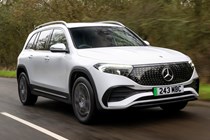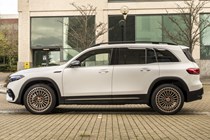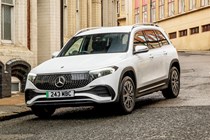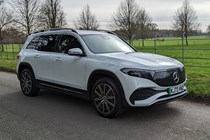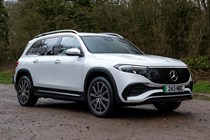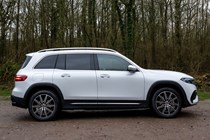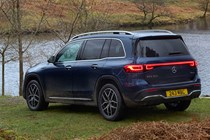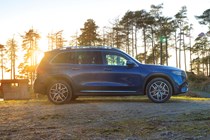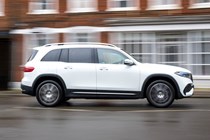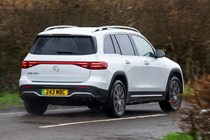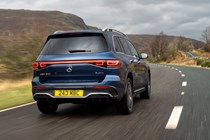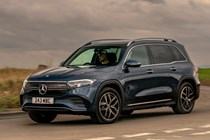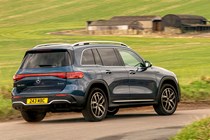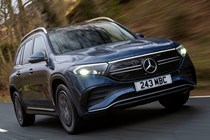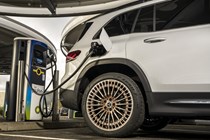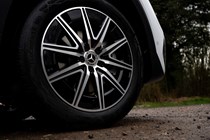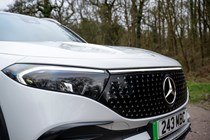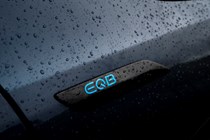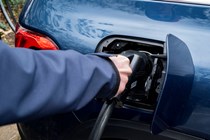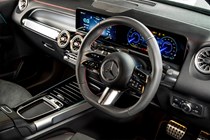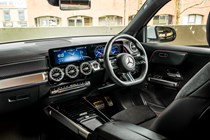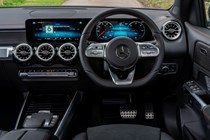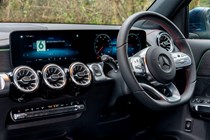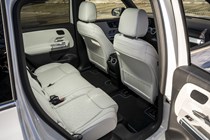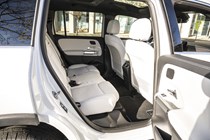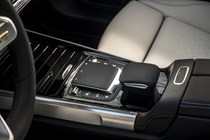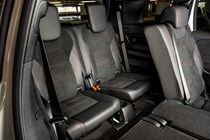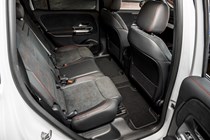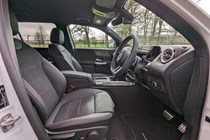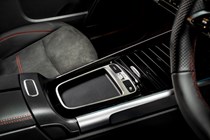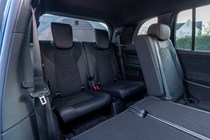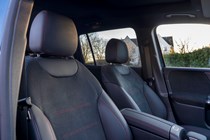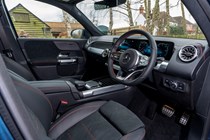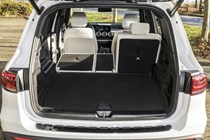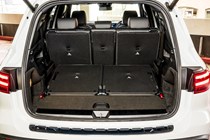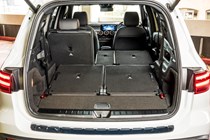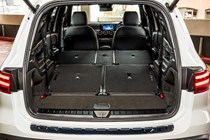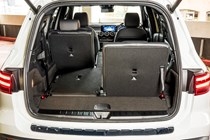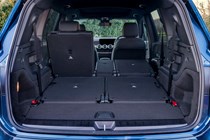
Mercedes-Benz EQB engines, drive and performance
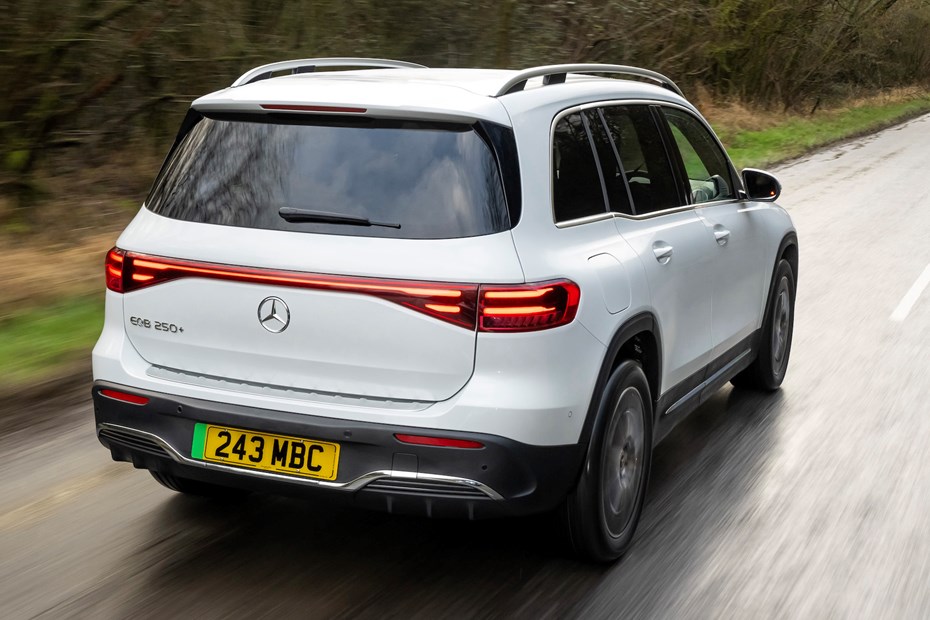
- Two power options
- Both have good shove
- Four-wheel drive
What power options are there?
There are three power outputs to choose from. The confusingly named 350 model has 292hp while the 300 has 228hp and the 250 has 190hp. The most powerful model has a 6.0-second 0-62mph time while the mid-range makes 7.7 seconds, and the entry-level 250 takes 8.9 seconds. The 300 and 350 come with four-wheel drive, while the 250 is front-wheel drive.
The 350 is effortless in its power delivery. It never feels anything but smooth and controlled. It has a bit less of a kick than the sometimes ridiculously fast Tesla Model Y, but we don’t think many family buyers will really be bothered by this. For most people switching to electric, this model will feel pretty quick. The acceleration, as with most electric cars, is most urgent from low speeds.
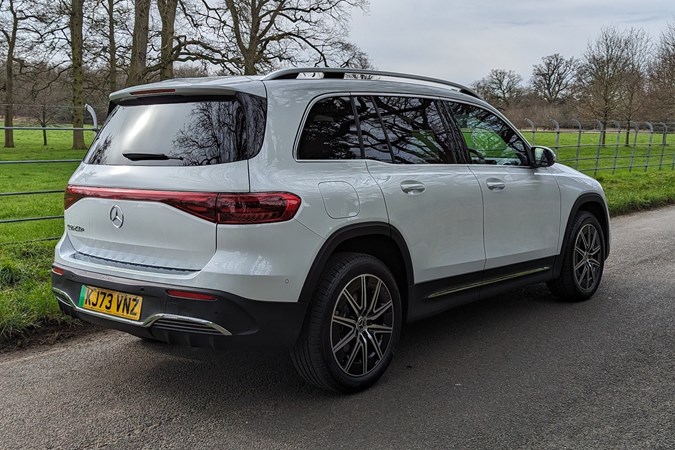
There’s definitely a bit less shove in the 300 but it’s hardly slow. It doesn’t feel that much slower on the 0-30mph sprint (useful at the traffic lights) but it is notably more leisurely than the 350 above 60mph. There’s still a swell of energy from standstill and it’s still measured out perfectly with no traction lost, but it’s just that bit slower. If you’re switching to electric, this will feel more like a petrol model.
The entry-level 250 is a more relaxed performer. In comparison with many of its EV rivals, its 8.9-second 0-62mph time hardly sets the world alight. But it still gets away from the lights quickly enough, spinning its wheels eagerly on damp surfaces, even if it tails off at higher speeds. It gathers pace in a hushed manner, and for most families, it will offer more than enough performance.
We think the 300 is the one to go for. In day-to-day driving it just doesn’t feel all that different, and it doesn’t seem like it’s worth the extra money. If you regularly travel seven up and are often overtaking on a-roads, the 350 might be useful.
The driving modes are well judged and really change the way the car drives. In Eco the response is dialled back in order to maintain energy and maximise the range. In Sport full power is delivered with only a small application of the accelerator pedal. Comfort is a halfway house which most people will stick with. It’s worth noting that the EQB can also tow up to 1,800kg, a rarity in the EV world.
What’s it like to drive?
- Safe and serene
- Soft at speed
- A bit bouncy at times
The EQB is a very comfortable and relaxed car to drive, which is a big positive in today’s stressful traffic. Off the line there’s an immediacy shared with all electric cars (250 aside, which is less rapid), but in the corners, the EQB’s tall body tends to lean a little more than a Tesla Model Y, and its light steering doesn’t inspire you to press on.
In Sport mode the steering is sharper, requiring less movement to go around corners. This isn’t particularly useful and feels unnatural. But we do like the much sharper accelerator response, which makes the most of what power’s available.
It’s a very quiet and relaxing place to spend time. There’s no engine noise, just a whirr from the electric motors. Wind noise is largely kept at bay, but a bit of racket from the tyres is transmitted into the cabin at motorway speed.
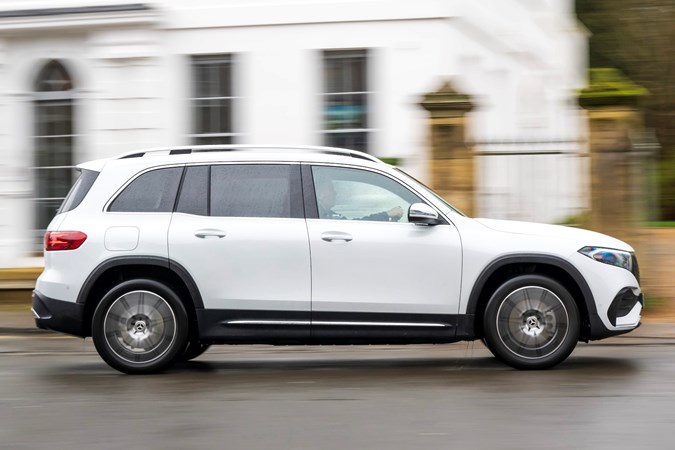
The standard fit four-wheel drive of the 300 and 350 broadly means it doles out its power in a constrained and safe manner. But don’t think it’s capable of tackling the toughest green lanes – muddy fields will be the apex of its off-roading ability.
The EQB excels in comfort and refinement though. Even on 20-inch alloy wheels, it irons out all but the largest bumps and potholes, and is a huge improvement over the smaller EQA.


